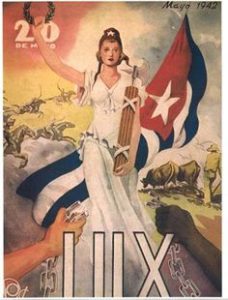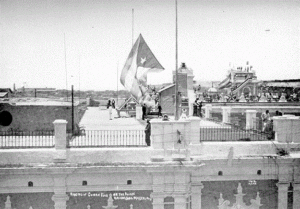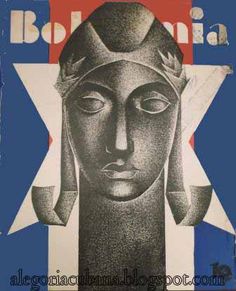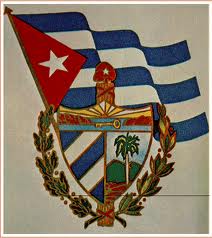On that day in 1902, people, even without knowing each other, would greet and hug each other in the street; Laughed and cried, shouted and sang. The whole Cuba vibrated with patriotic enthusiasm. Tens of thousands of people gathered on the still incipient Havana seawall remained on their knees in a gesture of devotion, while the national flag was hoisted on the Morro. The ceremony began in the old fortress when an American lieutenant warned from the street lamp that the national flag was already in the government palace. The flag of the bars and stars was lowered then, and General Emilio Nunez, governor of Havana, and the watchman of the Morro tied ours to the ropes to begin the lifting. It was not possible to proceed as planned or to maintain order because the officers of the Liberating Army present there rushed to the ropes and also pulled them.
He writes, full of healthy chauvinism, the chronicler Frederick Villoch in one of his discolored Old Postcards: “On May 20, 1902-a day of splendid sun and blue sky, as if God had come down to take part in the feast- The flags of the American intervention-no more than a handkerchief, of the little ones-came down from the mast of the Morro, and our national “flag” rose-great, beautiful, enormous-and he alone took the world; And swallowing the air, as he waved victoriously in frenzied whips. ”
He points later: “There was no window, door, roof, roof, balcony or street post where a Cuban flag does not hang, more or less large; Nor the breast of a man who did not show his three colors intertwined in a button or rosette in the buttonhole of the frock coat or sackcloth; Or a woman’s hairstyle where the tall and thick bow did not show the country’s flag, at the tip of an artistic and upright pin. ”
The historian Ramiro Guerra summed up in 1932: “Those who had the privilege of contemplating this apotheosis can never forget it”.
Were those Cubans who were crying with happiness on the street at the foundation of a state with international recognition even if it were a crippled and castrated Republic? Was Máximo Gómez wrong when, with his eyes clouded with tears, he embraced José Miguel Gómez, that May 20, in the old throne room of the government palace, to say: “I think we have arrived”?
Had we really arrived? Emilio Roig wrote in 1959:
“The Republic that emerged on May 20, 1902, was certainly not what they conceived and for which several generations of Cubans fought and died …
“Our long struggle for independence fulfilled its historic mission. And the Cubans must feel very satisfied to have left the Spanish despotism and conquered the Republic.
Did you know …?
Did you know that the Cuban flag that at 12:10 on May 20, 1902 was hoisted on the roof of the old Palace of the Captains General converted into the Presidential Palace, to announce that Cuba was already Republic, even if it was not the one by the Which was fought by several generations of Cubans, was dropped fifteen minutes later because the American intervener Leonardo Wood, already in office, wanted to take it as a trophy? That on that day, Tomás Estrada Palma’s inauguration as the first President of Cuba did not invite any woman – not even Genoveva Guardiola, the wife of the president – because the newly approved Constitution of 1901 did not recognize political rights to The females and, therefore, were excluded from the protocol? Did you know that, despite the withdrawal of intervention troops from the United States, who left the island that same day, were there three companies of the Army of that country that would train Cuban artillerymen and guard the fortresses?
Recordando aquella fecha nunca olvidada, el 20 de Mayo Cubano.
Aquel día de 1902, la gente, aun sin conocerse, se saludaba y abrazaba en la calle; reía y lloraba, gritaba y cantaba. Cuba entera vibraba de patriótico entusiasmo. Decenas de miles de personas congregadas en el todavía incipiente malecón habanero permanecieron de rodillas, en gesto de devoción, mientras la enseña nacional era izada en el Morro. La ceremonia comenzó en la vieja fortaleza cuando un teniente norteamericano avisó, desde la farola, que la enseña nacional ondeaba ya en el palacio de gobierno. Se arrió entonces la bandera de las barras y las estrellas y el general Emilio Núñez, gobernador de La Habana, y el vigía del Morro amarraron la nuestra a las cuerdas para comenzar el izaje. No pudo procederse como estaba previsto ni mantenerse el orden porque los oficiales del Ejército Libertador allí presentes se abalanzaron hacia las sogas y tiraron también de ellas.
Escribe, lleno de sano chovinismo, el cronista Federico Villoch en una de sus Viejas postales descoloridas: «El día 20 de mayo de 1902 —un día de espléndido sol y cielo azul, tal como si Dios hubiera bajado a tomar parte en la fiesta— descendía del mástil del Morro la banderita de la Intervención Americana —no mayor de un pañuelo, de los pequeños— y subía nuestro “banderón” nacional —grande, bello, enorme— cogiéndose él solo el mundo; y tragándose el aire, al ondear victorioso en látigos frenéticos».
Apunta más adelante: «No quedó ventana, puerta, tejado, azotea, balcón o poste de la vía pública de donde no colgase una bandera cubana, más o menos grande; ni pecho de hombre que no mostrase sus tres colores entrelazados en un botón o roseta en el ojal de la levita, saco o chamarreta; ni peinado de mujer donde el alto y espeso moño no luciera la enseña patria, en la punta de un artístico y enhiesto prendedor».
Sintetizaba el historiador Ramiro Guerra en 1932: «Los que tuvieron el privilegio de contemplar aquella apoteosis no podrán olvidarla jamás».
¿Se equivocaban aquellos cubanos que lloraban de felicidad en la calle ante la fundación de un Estado con reconocimiento internacional aunque fuera una República lisiada y castrada? ¿Se equivocó Máximo Gómez cuando, con los ojos nublados por las lágrimas, se abrazó a José Miguel Gómez, aquel 20 de mayo, en el viejo salón del trono del palacio de gobierno, para decirle: «Creo que hemos llegado»?
¿Habíamos llegado realmente? Escribía Emilio Roig en 1959:
«La República que surgió el 20 de mayo de 1902, no fue, sin duda alguna, la que concibieron y por la que lucharon y murieron varias generaciones de cubanos…
«Nuestra larga lucha por la independencia cumplió a plenitud su misión histórica. Y los cubanos debemos sentirnos muy satisfechos de haber salido del despotismo español y conquistado la República.
Sabian Ustedes..?
¿Sabía usted que la bandera cubana que a las 12:10 del 20 de mayo de 1902 se izó en la azotea del viejo Palacio de los Capitanes Generales convertido en Palacio Presidencial, para anunciar que Cuba era ya República, aunque no fuera aquella por la que lucharon varias generaciones de cubanos, fue arriada quince minutos más tarde porque el interventor norteamericano Leonardo Wood, cesado ya en su cargo, quiso llevársela como trofeo? ¿Qué ese día, a la toma de posesión de Tomás Estrada Palma como primer Presidente de Cuba no se invitó a ninguna mujer —ni siquiera a Genoveva Guardiola, la esposa del mandatario— porque la recién aprobada Constitución de 1901 no les reconocía derechos políticos a las féminas y, por tanto, se les excluyó del protocolo? ¿Sabía que, pese a la retirada de las tropas de intervención de Estados Unidos, que salieron de la Isla ese mismo día, quedaron aquí tres compañías del Ejército de ese país que entrenarían a artilleros cubanos y custodiarían las fortalezas?
Agencies/CiroBianchi/Extractos/Internet Photos/ Arnoldo Varona/ TheCubanHistory.com
THE CUBAN HISTORY, HOLLYWOOD.



 > REMEMBERING that date never forgotten, the Cuban May 20th. + RECORDANDO aquella fecha nunca olvidada, el 20 de Mayo Cubano.
> REMEMBERING that date never forgotten, the Cuban May 20th. + RECORDANDO aquella fecha nunca olvidada, el 20 de Mayo Cubano.






